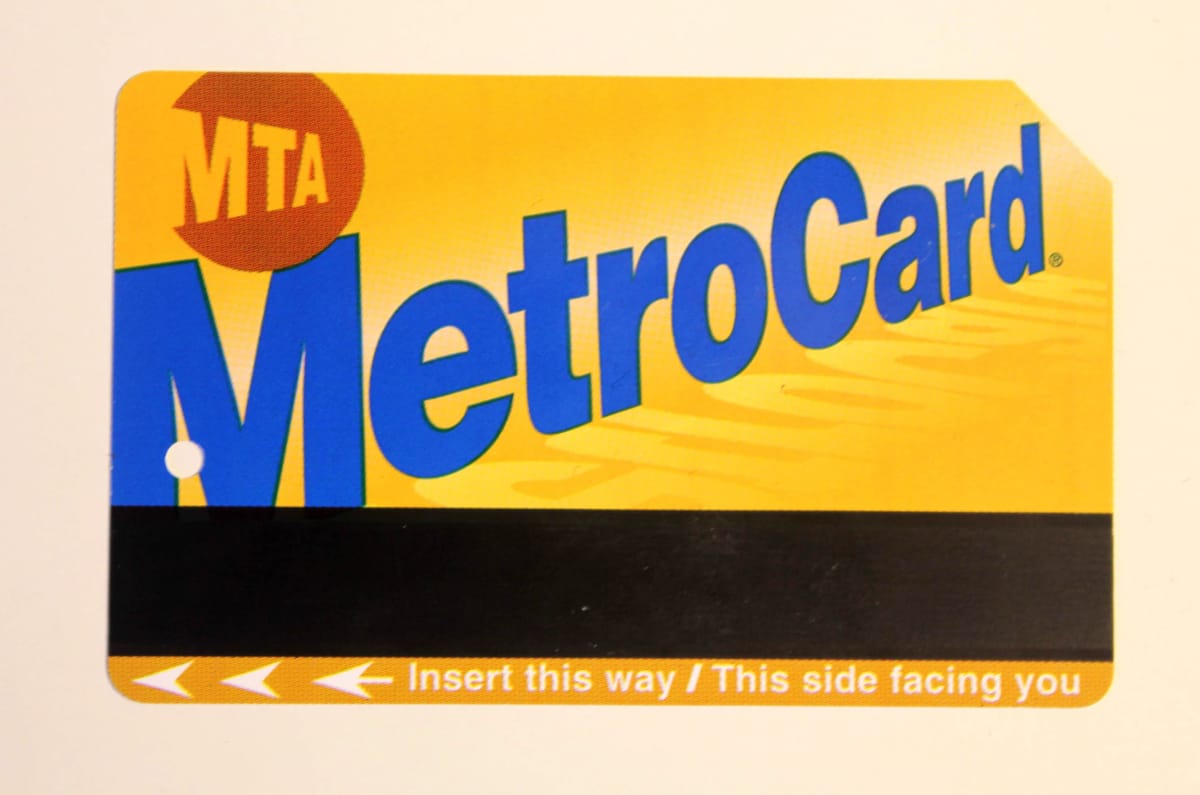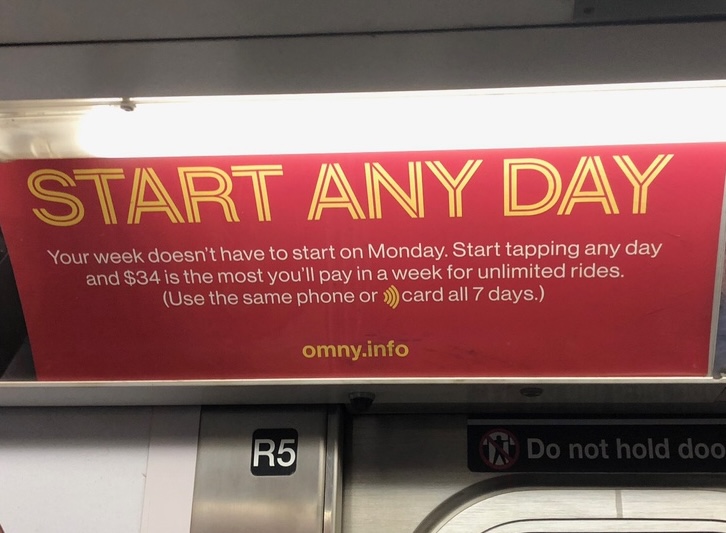OMNY's mind-blowing solution to a math problem
The unintuitive fare capping scheme for NYC commuters

There is another baffling thing about the new OMNY system. It's their new approach to frequent-use discounting.
In the old swipe-card system (link), frequent commuters buy weekly and monthly passes to save money.
The price for a single ride is currently $2.90. The seven-day pass costs $34 while the 30-day pass is $132.
The math is simple. You pay upfront for unlimited rides. After paying $34, you just hop on and off buses and subways without a care for the next 7 days. On the twelfth ride, the weekly pass pays off compared to the alternative of pay per ride because 12*$2.90 = $34.80 > $34.
Since rides usually are taken in pairs (going out, coming back), if you expect to use the subway or bus once a day for six out of seven days, you should get the 7-day pass. To be sure, you can keep track of whether there is a day in which you didn't take a ride. More than one such day and your weekly pass will likely not pay out. Meanwhile, if there is a day with two round trips, it's almost certain that the pass will come good.
A similar math applies to the 30-day pass. You'd want to avoid more than seven days of no trips. (The monthly pass is not offered in the new OMNY system, so I'll focus on the 7-day pass from now on.)
***
OMNY changes everything, and tells commuters the new way is much easier. Don't believe it.
The new frequent commuter discount is promoted as: "You keep tapping--let us do the math!" This sounds like a great convenience to commuters, only if you trust them with the math. This is especially so because the OMNY people make it strenuous for any commuter to follow the trail of charges. (See my prior post on their communications fiasco.).
Alright, they didn't really say let us do the math in those exact words. As the following subway ad shows, the actual words are "Start tapping any day and $34 is the most you'll pay in a week for unlimited rides."

At first sight, this sounds simple. You just keep tapping, and when the amount exceeds $34, it should stop adding extra charges. Beyond that point, all rides are free. OMNY calls this "fare capping".
If you give it another moment, you'd realize that something doesn't click. Let's assume you've gone beyond the cap, and all future rides are free. Now ask when will your rides stop being free? (The OMNY tablets never say how much is charged as you go through the turnstile. Hence this question.)
To answer that, you'd have to know when the clock started. Indeed, when did the seven-day window begin? In the official materials (link), this moment is called the "first tap".
The subway ad hides a little big issue under the rug. It says you can start "any time" but other than the first time you ever use the OMNY card, which of your other taps is a first tap? Is the second lifetime tap the second tap of the same counting window, or is it the "first tap" of a new counting window?
You might think that is a silly question. So, let's walk through a scenario. Let the "first tap" start the clock, and they look at the seven days from that moment. Assume you did not ride enough to meet the cap. Supposedly, after seven days, the counting window resets--but it probably doesn't until your next tap. It's highly unlikely that you magically tap exactly seven days from the previous first tap. Therefore, if the window resets exactly seven days from the first tap, it would no longer start with a tap. For the next window to start on a "first tap", it has to wait till your next tap.
Is your head hurting as much as mine? This is cognitive overkill.
A literal interpretation of fare capping: the very first time you use the OMNY card, it establishes your personal first-tap time (say, Monday 9 am). This then divide your future into 7-day windows, all starting on Monday at 9 am. If you commit this time to memory, then your approach to using fare capping is similar to the previous 7-day pass: just tap as many times as possible in the next seven days.
I don't think that's the right interpretation since only the first counting window starts with a first tap; none of the others will.
If we follow the other interpretation, each new counting window starts with a first tap, thus after one counting window ends, the next one does not start till your next tap. From a commuter's perspective, this is mindblowingly complex. Imagine you are about to tap, and you want to know where you are within the current 7-day window. You'd have to start from your very first tap, and then work out each counting window, one at a time!
That's why I called this fare-capping program "Don't ask questions, just trust us."
This is not how you treat your customers. The next mayor should fix this, presto.
***
In the next post, I'll discuss how I think this fare-capping scheme actually works. That is to say, how it would work if I were designing it.
P.S. It doesn't have to be this hard. I heard from someone familiar with one transit system in Australia. They have a daily fare cap. The day starts and ends the same way for everyone. Fares are capped to a maximum per day. It's really that simple.
Would love to hear how frequent commuter discounting works in your transit system!
[7/31/2025] The next post can be found here.



